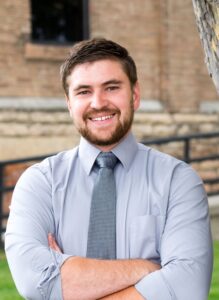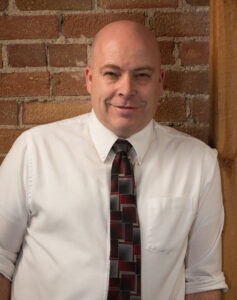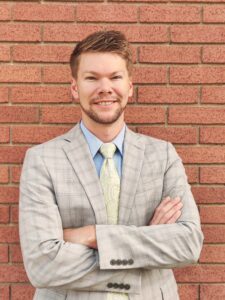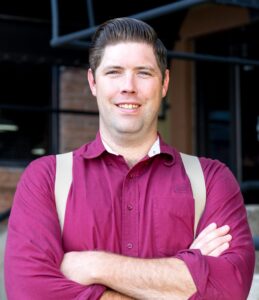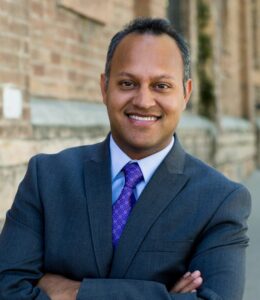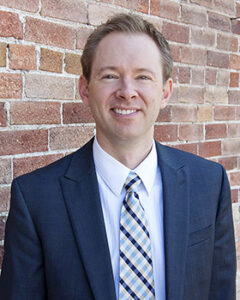With the Great Utah ShakeOut drill taking place yesterday, our team at Dunn Associates, Inc. took some time to reflect on what we learned from our participation over the last 2 years.
We polled our team asking the following 3 questions:
- What did you learn from the earthquake last year? Or from our ShakeOut participation?
- What is one change or preparation you and your family have made to be ready for a future earthquake?
- How do you feel about future earthquakes after making these changes/preparations?
After reading through everyone’s responses, we realized that they offer some great insight and tips on ways we can all be more prepared.
____________
Austin:
We need to have a plan. When the earthquake hit, we didn’t know what to do. But since, then, we better know what to do when another earthquake hits.
There are still somethings we can do to stabilize things and protect our property, but I have a better idea of how to protect myself and my family when it happens. Having been through one already, I feel better prepared to push off my surprise and immediately take steps to get my family to safety quickly.
Gil:
- What did you learn from the earthquake last year? Or from our ShakeOut participation?
- I learned that some people are really afraid of earthquakes. I am not and I realize now that it is important for me not to be afraid of earthquakes.
- What is one change or preparation you and your family have made to be ready for a future earthquake?
-
- We have started having water storage on hand. We keep it in large containers in the garage and rotate through it, just in case the pipes were to break.
- How do you feel about future earthquakes after making these changes/preparations?
- Better prepared.
Kelly:
Something I saw recently that really stuck with me (for ANY major emergency) is: if you need to leave your house and simply do not have time to pack, grab your dirty clothes hamper. They might be dirty, but chances are it has full sets of your most commonly worn clothes.
Brett:
After the earthquake of 2020, my family now keeps all of our camping gear in our outdoor shed. I always keep a full propane tank, a full 5-gallon gas can (for our generator), and lots of water in the shed also.
Trevor:
After the earthquake last year, I decided to go through the house and secure top-heavy furniture (like dressers and book shelves) to the walls so they wouldn’t tip over. I have two little kids, and realized that may be one of the biggest threats to their safety with a large enough earthquake, not to mention it’s recommended to do anyway!
Aaron:
Our family has since invested in some “bug-out bags” that everyone knows where they are in case of any emergency, not limited to earthquakes. It has given us a great opportunity to teach and prepare the kids, but also my wife, about catastrophe preparedness so that we are all on the same page on where to go and who to call in such situations.
I feel like I am much more prepared for something of this magnitude in the future. Not only having something in my home to have in place and practice, I have also been able to help out other people in my community to be more aware and also talk about these things to get them prepared too.
Anu:
It was a scary experience for our 2-year-old daughter. We started to discuss earthquakes with her and showed her what to do when the earth shakes. We talked about emergency meeting points, types of furniture to hide under, and got emergency water supply. We are better prepared for a future earthquake but our society still lacks the resilient infrastructure and that will overshadow any personal preparation in case of a big earthquake.
Tyler Wright:
We made sure that heavy items were not hanging over sleeping areas. We added to our food storage. We also felt the need to obtain more emergency supplies, like first aid kits and water. I felt that the emergencies of 2020 (Earthquake/Pandemic/Social Unrest) were a wakeup call for all of us that emergencies can happen at any time and that sometimes we can have more than one emergency at once, and that we need to be better prepared. I feel that we as a family are somewhat better prepared for the next one, but there always seems like there is more that we could do to be better prepared.
Phil:
I learned to have a sense of urgency about preparation of all kinds. Not just physical preparation, though that is very important, but also emotional, mental and social preparations and contingencies. Physical disasters are often followed by emotional disasters. I have more water on hand at home, a bit more fuel. I’m thinking about what it would take to stay at home for several days or weeks without significant external support. 72-hour kits seem a bit inadequate for large scale scenarios. [I feel] a bit better, but there is only so much you can do. You aren’t really ever prepared to go weeks without a given resource. We are going to have to rely on neighbors and friends to get through it, and that’s not a bad thing.
Josh:
My family (my wife mostly) put together a “Go Bag” with some essential items for each member of the family in the off chance that we need to leave the house in a hurry. These “Go bags” are in the closet next to our garage so that we can get them and get out in a hurry regardless of whether it is a fire, earthquake, or zombie apocalypse.
While my wife prepared the “Go Bags” for our family, I did something else… I reviewed the structural drawings for our home. I found the soils report to find out what type of soil was beneath my home. Then I researched the closest fault to my home, which ended up less than a mile away. It probably goes without saying that I also mapped out the seismic design values for my home to find an equivalent in California… turns out that my home would be designed to the same level of seismic force as a home next to Disney Land in Anaheim, California! My name is Josh and I like to geek out on structural engineering. The more that I understand the unknowns of earthquakes, the more prepared I feel personally.
Dave:
We are working toward having a more coordinated response plan as an office so that we can better serve the public at large in a time of crisis. The recent earthquake has also granted us a more receptive platform to share the importance of seismic design and structural engineering at large.
____________
Overall, the biggest take away we hope to offer to our community is awareness that there are big and small things that we can each do to prepare ourselves, our families, and our teams for a future earthquake.
If you weren’t able to participate in yesterday’s drill, that’s OK! There are still ways you can participate, just visit the following link: www.shakeout.org/utah/index.html to learn more. The important thing in all of this is to create a plan and start getting prepared now.
Do you live outside of Utah? Well, you can still participate by going to www.shakeout.org to find when your state or country is hosting the “Shake Out” earthquake drill.
Be safe!
